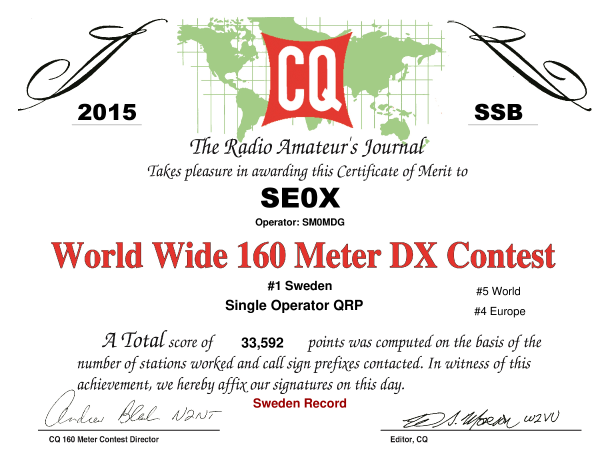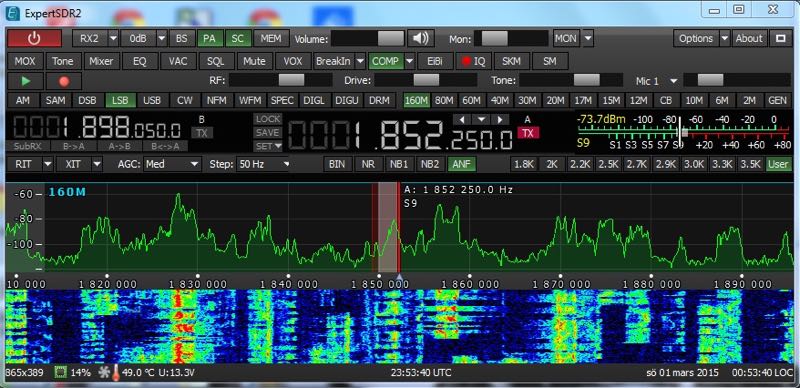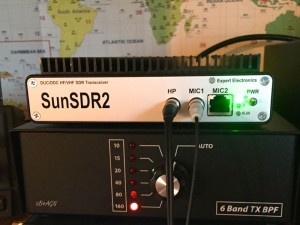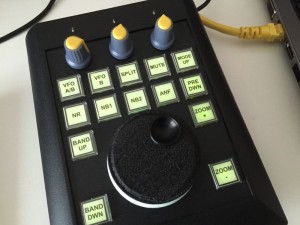QRP action in CQ-160 SSB!

Working a 160 meter contest QRP is much more fun than you might think! A few weeks ago I worked the CQ-160 SSB contest using 5 watt QRP power. I logged more than 200 QSOs and the claimed score is almost half the number of my SM Low Power record and more than a third of my High Power and High Power Assisted records.
Don’t get me wrong, QRP in an SSB contest is not easy. Especially not on 160 meter! Mostly its hard work and slow rates, but I was surprised how well some operators heard me in the QRM. Even DX stations like CR3L and RA9Y picked me out with ease. On the other hand there where some really strong stations that definitely lacked in the RX antenna department.
Most of the 18 hours of operating I was doing S&P, Search and Pounce. The Meothod I used was to sweep the bands for stations to work. As soon as i found a ‘hole’ I tried a run. Two or three times I was lucky and got spotted, but most of the time the runs did not produce much action. This cycle of S&P sweeps and runs where repeated over and over again during the contest.

The main radio used was a SunSDR2, a physically small but loaded Russian SDR, Software Defined Radio, from Expert Electronics. Having the band scope made a big difference for S&P but also made it simple to quickly locate “holes” in the QRM to run in. Being QRP means constantly being stepped on and squeezed away from your run frequency. Picking a fight with those big bastards is hopeless, since they simply don’t hear a QRP signal. Using the SDR band scope really spends up the task of finding a new run frequency.
My overall impression of the SunSDR2 is very positive. Its has a good RX, easy to use software and quite a few features and functions making it a very good SDR for contesting. The optional control pad for the SunSDR2 is useful for tuning and controlling the radio while letting the logging software retain its focus so its ready for the operator to input the next call.
The SunSDR controller allows for extensive customisation. I preprogrammed buttons to zoom the band cope in an out. I put IF Shift and Width on adjustment knobs to make filter changes a breeze, and I put ANF (automatic notch filer) on another button. As my FCP vertical easily easily detunes in rain and humidity I put TONE on one button to be able to generate a carrier to quickly retune the amplifier when needed.
In preparation for the contest I added an extra tap on the loading coil of the vertical. My top loaded vertical with its FCP (Folded Counter Poise) is rather narrow in bandwidth. To make use of the low power portion above 1850 kHz I wanted to be able to retune the antenna from the shack. A relay to switch between two taps on the loading coil was added to shorten the coil for resonance in the higher part of the band. The relay is controlled ny a simple ON/OFF switch placed at the operating desk. SWR is still high in the edges, but the tuner in the SPE amplifier is able to tune enough SWR giving me a usable range from 1810 to 1970 kHz.
I am very satisfied with the result. When the contest was over I had 203 unique contacts logged in 18 hours. I logged a total of 34 DXCCs and 99% of the calls 2 where obviously in EU with DL and SP in the top. The only DX worked where CR3L and RA9Y mentioned above. Many more where heard, but there is just so much 5 watt can do. The claimed score is 34.442 with a #5 world rank. Pretty good for a QRP effort in a 160 meter SSB Contest!
Equipment
SunSDR2 with controller
Top loaded vertical, 20 meter
Pennants in NE and NW
Clifton Labs active vertical
Update September 10, 2015: This effort is a new SM record!
The SunSDR2 was provided by PileupDX.com.


